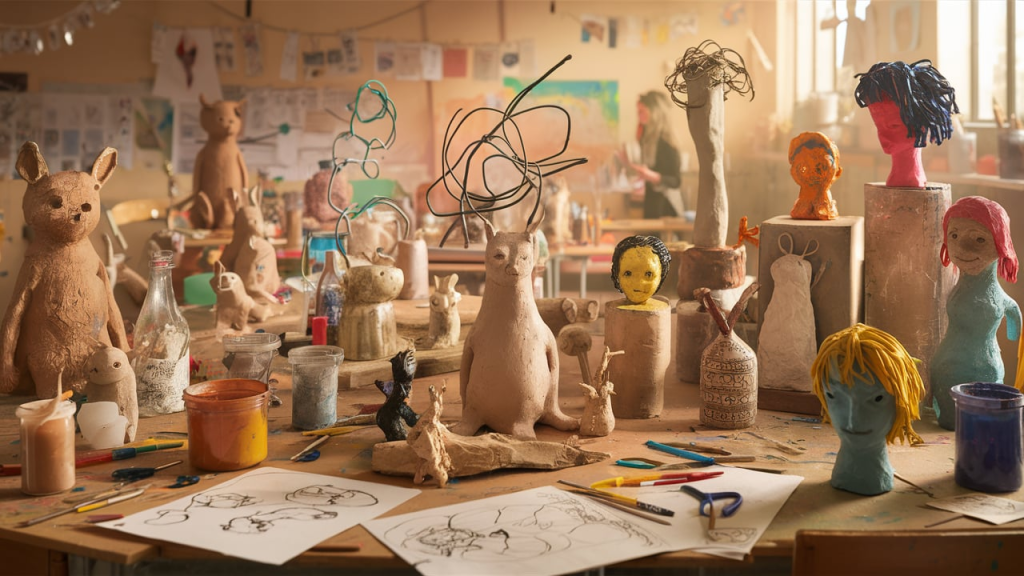Sculpting is a fun way to get creative in art class. I love how it lets us turn simple materials into something new.
Clay, paper, wire—there are so many ways to make a sculpture. It’s hands-on, and that makes it exciting for students. Some kids enjoy shaping clay, while others like building with cardboard or wire. The best part? There’s no right or wrong way to do it.
I’ve put together some easy sculpture ideas that work well for different skill levels. These projects use simple materials, so they’re great for any classroom.
Some are quick and easy, while others take more time. No matter the project, students will have fun bringing their ideas to life.
If you’re looking for new ways to teach sculpture, these ideas will help. Let’s get creative with some hands-on art!
Benefits of Teaching Sculpture in Art Class
Teaching sculpture in art class has many benefits for students. It’s not just about making art; it helps students develop important skills.
- Encourages Creativity: Students get to think outside the box and create something from their imagination.
- Improves Fine Motor Skills: Working with small details helps strengthen hand muscles.
- Enhances Problem-Solving Skills: Figuring out how to balance or connect pieces helps with critical thinking.
- Boosts Confidence: Seeing a finished sculpture gives students a sense of achievement.
- Engages Different Learning Styles: Hands-on learners enjoy sculpture more than drawing or painting.
Sculpture makes art class more interactive and fun. It gives students a break from screens and helps them develop patience and focus.
Sculpture Ideas for Your Next Art Lesson
Try these different sculpture ideas using various materials. These projects are fun, easy, and great for all skill levels.
1. Clay Sculpture Ideas
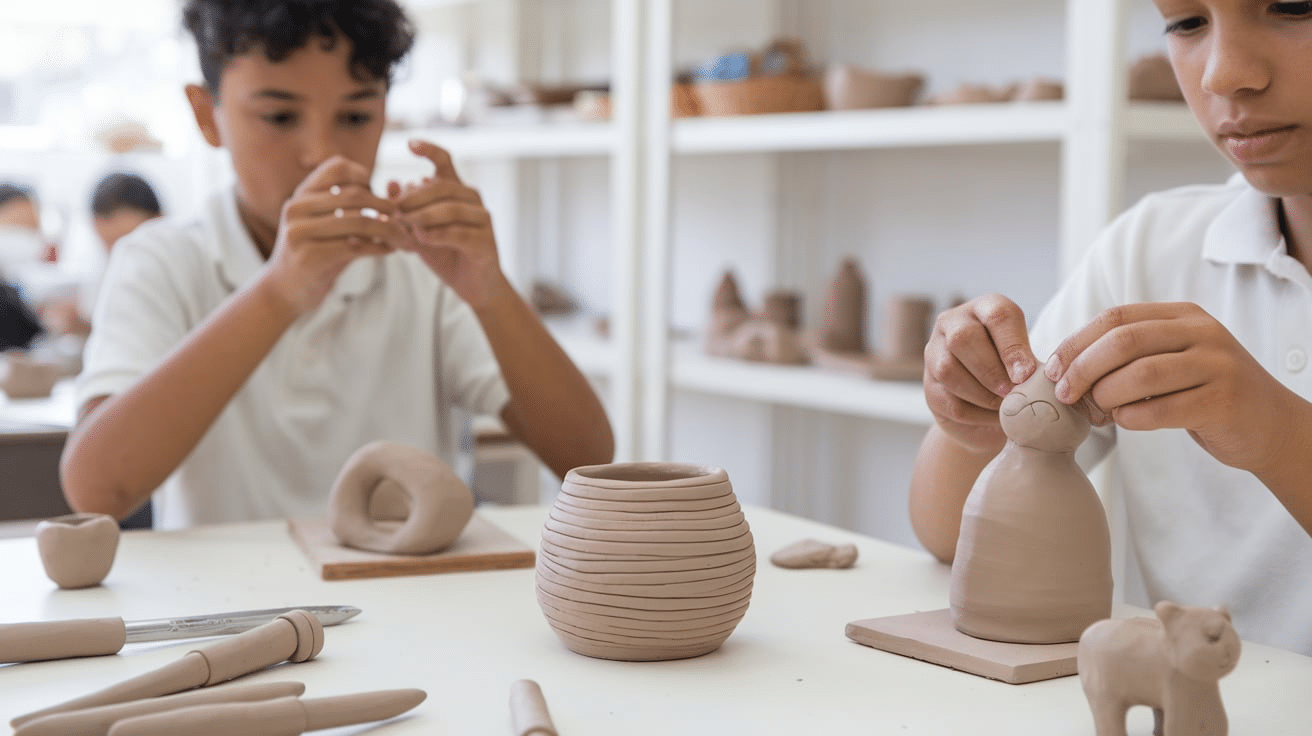
Clay is one of the most common materials used for sculpture. It’s easy to shape and works well for all ages.
Pinch Pots
Pinch pots are one of the easiest clay projects. They help students understand basic hand-building techniques.
Steps:
- Roll a ball of clay about the size of a small orange.
- Use your thumb to press a hole in the center.
- Slowly pinch the sides outward to shape the pot.
- Smooth the edges with your fingers or a damp sponge.
- Let it dry and paint once hardened.
Coil Pots
Coil pots are a great next step after pinch pots. They help students learn how to roll and stack clay.
Steps:
- Roll out long, even coils of clay.
- Shape a small, flat base for the pot.
- Stack the coils on top of each other, pressing gently to attach.
- Smooth the sides for a cleaner look, or leave them textured.
- Let the pot dry before painting or glazing.
Animal Figures
Students love making animals from clay. This project helps with shaping and adding details.
Steps:
- Pick an animal to sculpt.
- Start with basic shapes like spheres and cylinders.
- Attach pieces by scoring (scratching) the clay and adding water.
- Carve details using tools or toothpicks.
- Let it dry completely before painting.
2. Paper Sculpture Ideas

Paper is a great material for sculpture. It’s easy to find, inexpensive and allows for endless creativity.
Paper Mâché Masks
Paper mâché is a fun way to create lightweight, strong sculptures.
Steps:
- Blow up a balloon to use as a base.
- Tear the newspaper into small strips.
- Mix flour and water to make a paste.
- Dip newspaper strips into the paste and layer them on the balloon.
- Let it dry for a day, then pop the balloon.
- Cut eye holes and paint the mask.
3D Paper Sculptures
Students can create abstract or realistic sculptures by cutting and folding paper.
Steps:
- Use construction paper or cardstock for stability.
- Cut shapes like loops, spirals, and waves.
- Fold or curl pieces to add dimension.
- Glue them together on a sturdy base.
3. Wire Sculpture Ideas
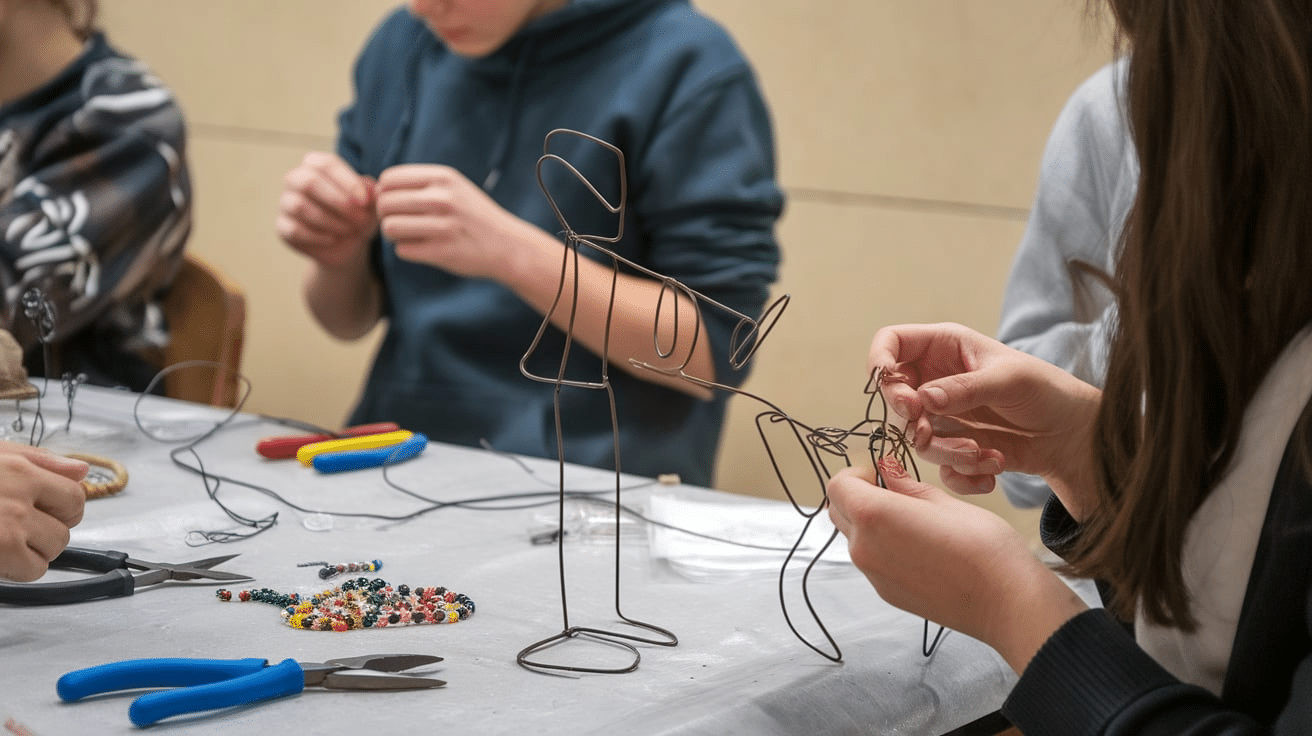
A wire is a great material for making flexible and lightweight sculptures.
Wire Stick Figures
This simple project helps students understand structure and movement.
Steps:
- Cut a long piece of thin wire.
- Twist it into the shape of a stick figure.
- Add more wire for arms, legs, and head.
- Pose the figure in different positions.
Wire and Bead Sculptures
Adding beads makes wire sculptures more colorful and detailed.
Steps:
- Cut different lengths of wire.
- String beads onto the wire to create patterns.
- Twist and bend the wire into abstract shapes or simple figures.
4. Recycled Material Sculptures
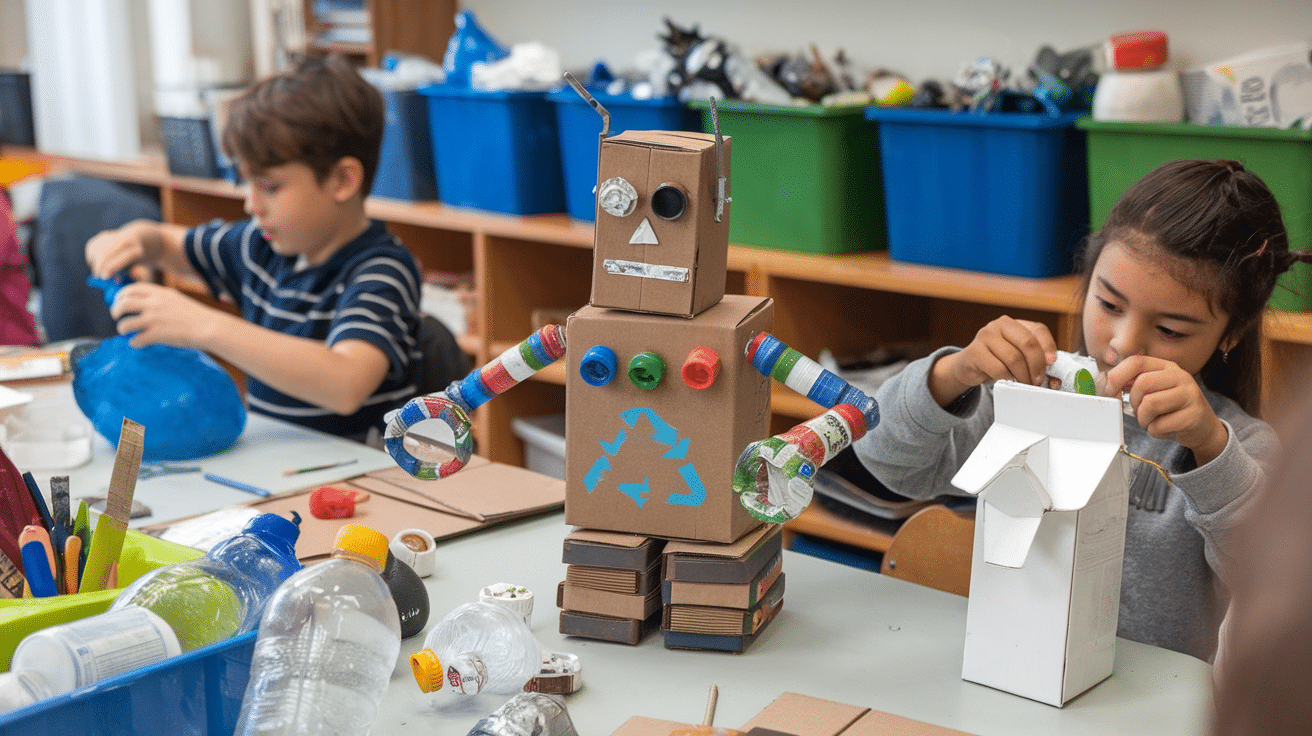
Using recycled materials for sculpture is a great way to teach creativity and sustainability.
Cardboard Sculptures
Cardboard is a strong and easy-to-use material for sculpture.
Steps:
- Cut different shapes from cardboard.
- Stack and glue pieces together to build layers.
- Use tape or hot glue for support.
- Paint or decorate the sculpture when done.
Plastic Bottle Sculptures
Empty bottles can be turned into creative sculptures.
Steps:
- Collect different-sized plastic bottles.
- Cut and shape them with scissors.
- Attach pieces with glue or tape.
- Paint the sculpture or add other materials for details.
5. Nature-Inspired Sculptures
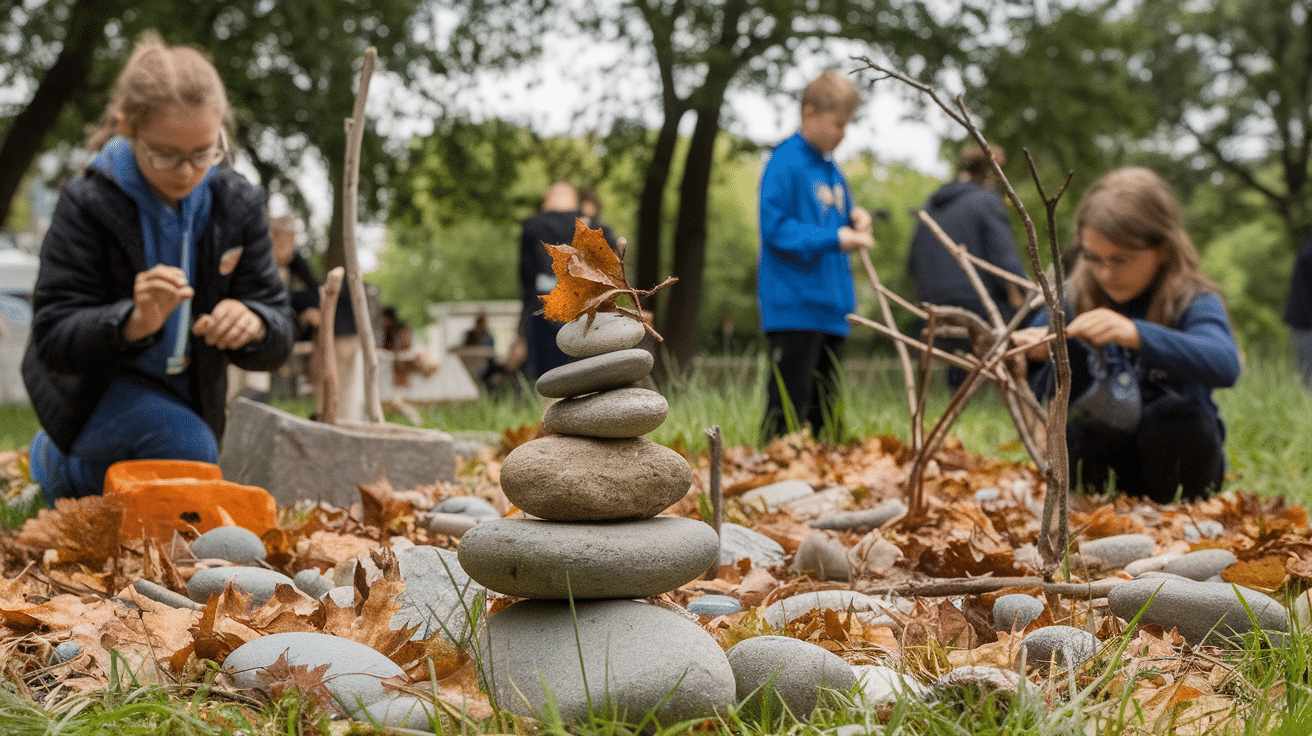
Using natural materials adds an organic feel to sculptures.
Leaf and Stick Sculptures
Leaves, twigs, and stones make great materials for creative sculptures.
Steps:
- Collect materials from outside.
- Arrange them into interesting shapes.
- Use glue or string to attach pieces.
Rock Painting and Stacking
Stacking and painting rocks is a fun, simple project.
Steps:
- Find smooth, flat rocks.
- Stack them into towers.
- Paint designs or faces on each rock.
6. Fabric and Soft Sculptures
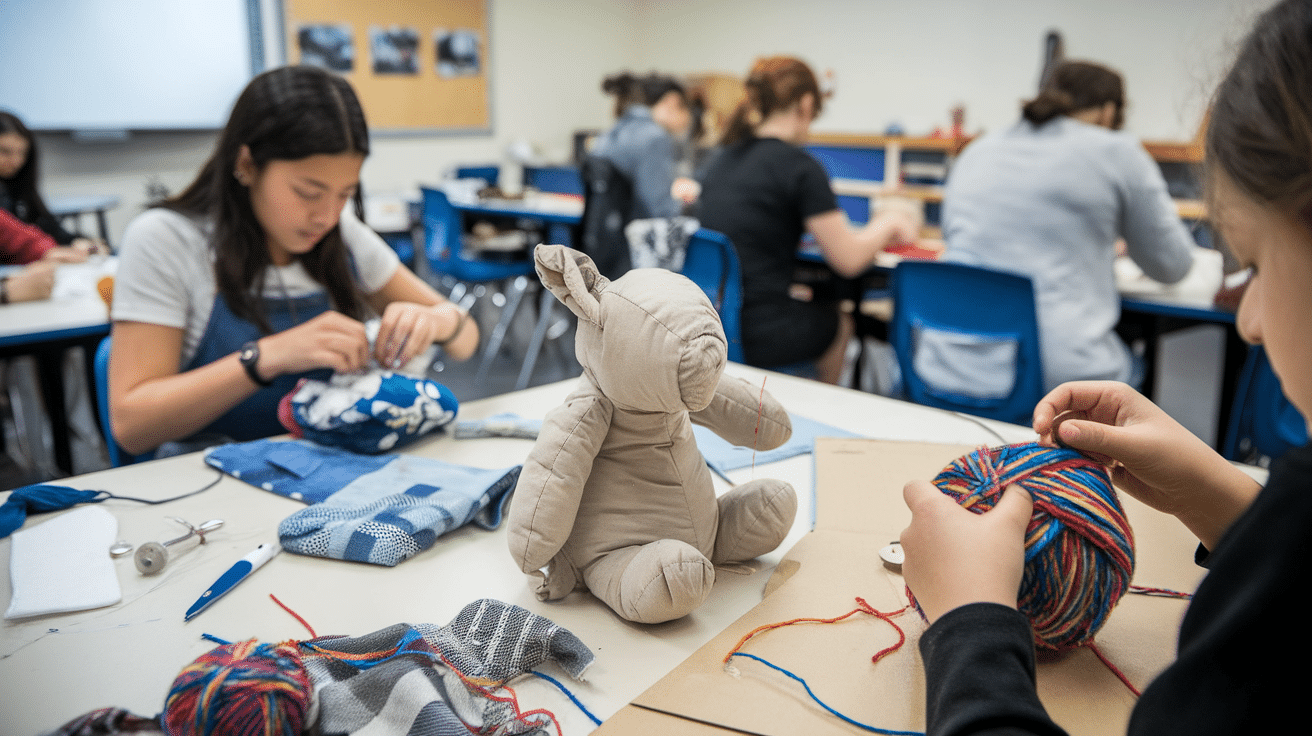
Soft materials like fabric and yarn can also be used for sculpting.
Stuffed Fabric Shapes
Students can sew and stuff fabric to make soft sculptures.
Steps:
- Cut fabric into two identical shapes.
- Sew the edges together, leaving a small opening.
- Stuff with cotton or fabric scraps.
- Sew the opening closed.
Yarn Sculptures
Yarn can be used to create sculptures by wrapping it around objects.
Steps:
- Wrap yarn around wire, sticks, or cardboard shapes.
- Tie the ends to keep it in place.
- Layer different colors for a bright look.
7. Food-Based Sculptures
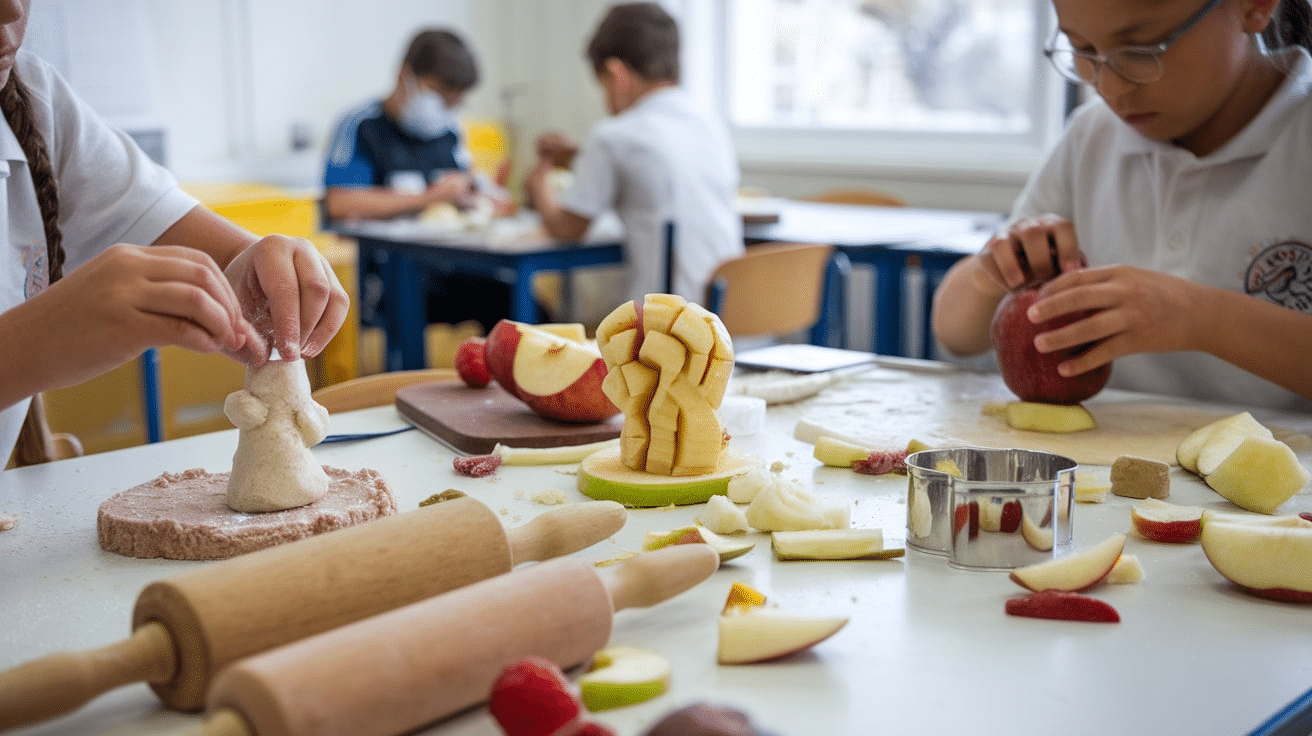
Food can be a fun and temporary way to create sculptures.
Salt Dough Sculptures
Salt dough is easy to make and dries hard like clay.
Recipe:
- 2 cups flour
- 1 cup salt
- 1 cup water
Steps:
- Mix the ingredients to form a dough.
- Shape it into sculptures.
- Bake at 200°F until hard.
- Paint when cool.
Fruit and Vegetable Sculptures
Carving fruits and vegetables is a creative way to make temporary sculptures.
Steps:
- Use apples, carrots, or potatoes.
- Cut and carve shapes with plastic knives.
- Arrange pieces into a sculpture.
Encouraging Creativity in Sculpture Projects
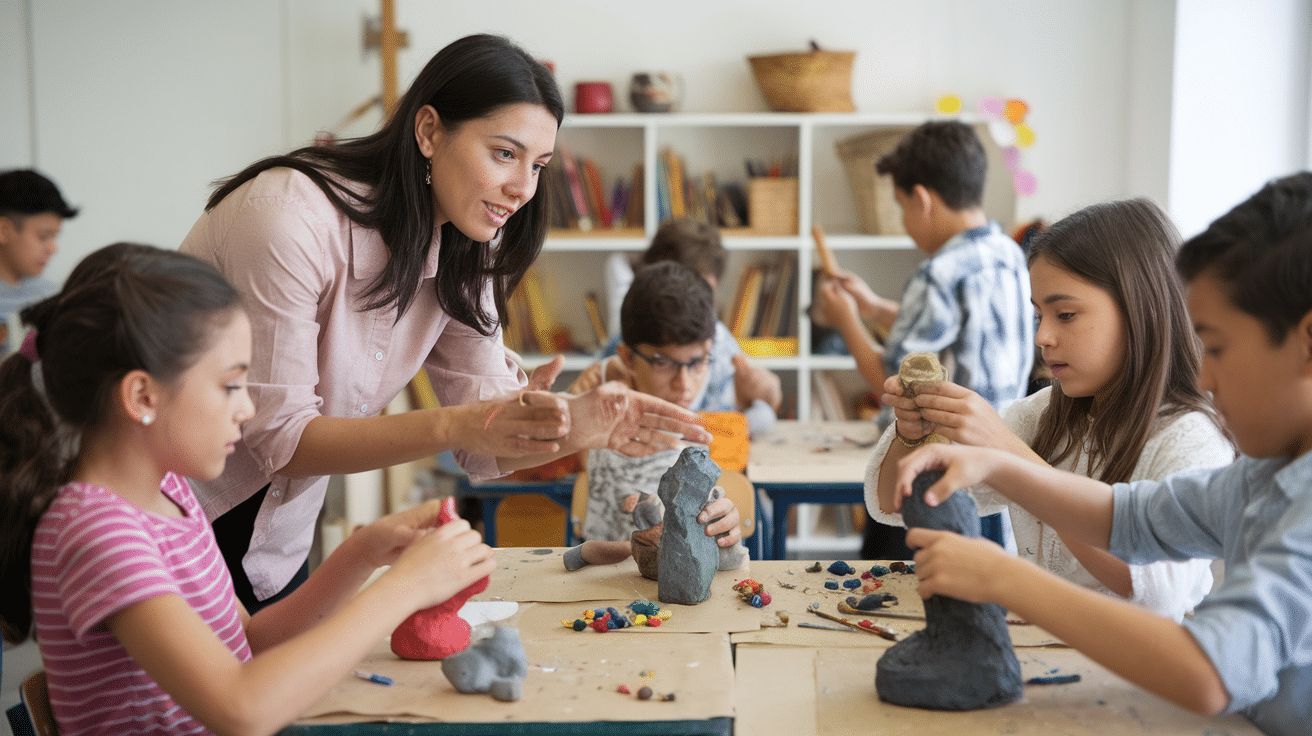
Sculpture is about creativity, so let students have fun and explore. Here’s how to encourage them:
- Let Them Choose Materials: Give students different options and let them pick what they want to use.
- Ask Open-Ended Questions: Instead of telling them what to make, ask, “What can you create with this?”
- Show Examples, But Don’t Copy: Show different styles of sculpture but encourage original ideas.
- Use Music and Stories for Inspiration: Play music or tell a story to spark creativity before they start.
- Celebrate All Creations: Every sculpture is unique, so praise effort and creativity, not just the final result.
Tips for Teaching Sculpture to Beginners
If your students are new to sculpture, start with simple projects. Here are some tips to make learning easier:
- Use Soft Materials: Clay, paper, and pipe cleaners are easy to shape.
- Demonstrate Techniques: Show students step-by-step how to roll, pinch, or cut materials.
- Encourage Experimentation: Let students explore different shapes and textures.
- Provide Support Tools: Toothpicks, plastic knives, and rolling pins help with shaping.
- Be Patient: Some students may struggle at first, so encourage them to keep trying.
Common Mistakes and How to Avoid Them
When students work on sculpture projects, they might face some challenges. Some mistakes and how to fix them:
1. Clay Cracks While Drying
Why it happens: The clay dries too fast or is too thick.
How to fix: Keep pieces even in thickness and dry them slowly by covering them with plastic.
2. Paper Mâché Peels Off
Why it happens: The paste isn’t thick enough, or the layers are too thin.
How to fix: Use a strong paste mix and add at least three layers of paper.
3. Wire Sculptures Collapse
Why it happens: The wire is too thin or not connected well.
How to fix: Use thicker wire and twist pieces tightly for better support.
4. Recycled Sculptures Fall Apart
Why it happens: The glue isn’t strong enough.
How to fix: Use hot glue or tape for better support.
Helping students understand these problems will make their sculptures stronger and more successful.
Conclusion
Sculpture brings excitement to art class. It lets students create with their hands and use different materials.
They can build with clay, shape wire, or turn paper into something new. Each project helps them learn skills like problem-solving, patience, and creativity.
Teaching sculpture doesn’t have to be hard. Simple projects like pinch pots, wire figures, or paper mâché masks make starting easy. Using recycled materials adds a fun challenge while also teaching about sustainability.
Group projects help students learn teamwork, and nature-inspired sculptures connect them with the world around them.
Encouraging creativity is important. Let students explore ideas and find their own style.
Mistakes are part of the process, and each sculpture is a chance to learn something new. No matter the material, students will enjoy making something they can see and touch.
Try these sculpture ideas in your next lesson and watch their creativity grow.
Frequently Asked Questions
What are the easiest sculpture projects for beginners?
Pinch pots, coil pots, paper mâché masks, and wire stick figures are great for beginners. They use simple techniques and materials that are easy to shape.
How can I help students who struggle with sculpting?
Start with simple projects and demonstrate each step clearly. Offer extra support, let them experiment, and remind them that mistakes are part of the learning process.
How do I keep clay from cracking?
Keep clay pieces an even thickness, dry them slowly, and cover unfinished projects with plastic wrap to keep moisture in.
What’s the best way to display student sculptures?
Use shelves, tables, or wall-mounted stands to showcase finished pieces. A class art show is also a great way to highlight their work.


